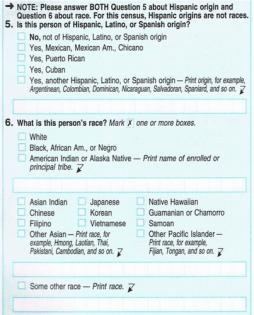Since 1997, when the U.S. Office of Management and Budget revised its list of federal racial categories (first established in 1977), the official U.S. government list of races now includes: white; black; American Indian or Alaska Native; Asian; and Native Hawaiian or Other Pacific Islander. It does not include “Hispanic,” which the federal government considers to be an “ethnic” and not a “racial” group. This exclusion may come as a surprise to many people, since Americans increasingly come to think of Hispanics or Latinos as a major group akin to whites, blacks, and Asians. However, here again history sheds light on our present-day categories. In 1930, the Census Bureau introduced a “Mexican” category, but it met with forceful protest both by Mexican-Americans as well as the Mexican government. Understandably, these groups were concerned about the consequences of being counted separately from the “White” category to which they had previously been assigned. Since then, the Bureau has never reintroduced a Hispanic category to its race item. However, during the Civil Rights era, the Office of Management and Budget designated Hispanics an “ethnic group” to be considered alongside other, racial minority groups for purposes of equal opportunity programs and anti-discrimination efforts.
Consistent with the last two hundred years of U.S. census-taking, our racial categories may change again on the upcoming 2020 census. Two options that are currently being considered involve the inclusion of (1) a “Hispanic or Latino origin” category on the census race question, in order to accommodate what is now the nation’s largest minority group; and (2) a “Middle Eastern or North African origin” category. Both possibilities were explored during a huge research effort, involving over 400,000 households, that the Census Bureau conducted in 2010. These proposals remind us that racial classifications have not only changed considerably in the past, but that they will most likely continue to do so in future.
IMAGE: United States census form 2010 via Racebox.org


